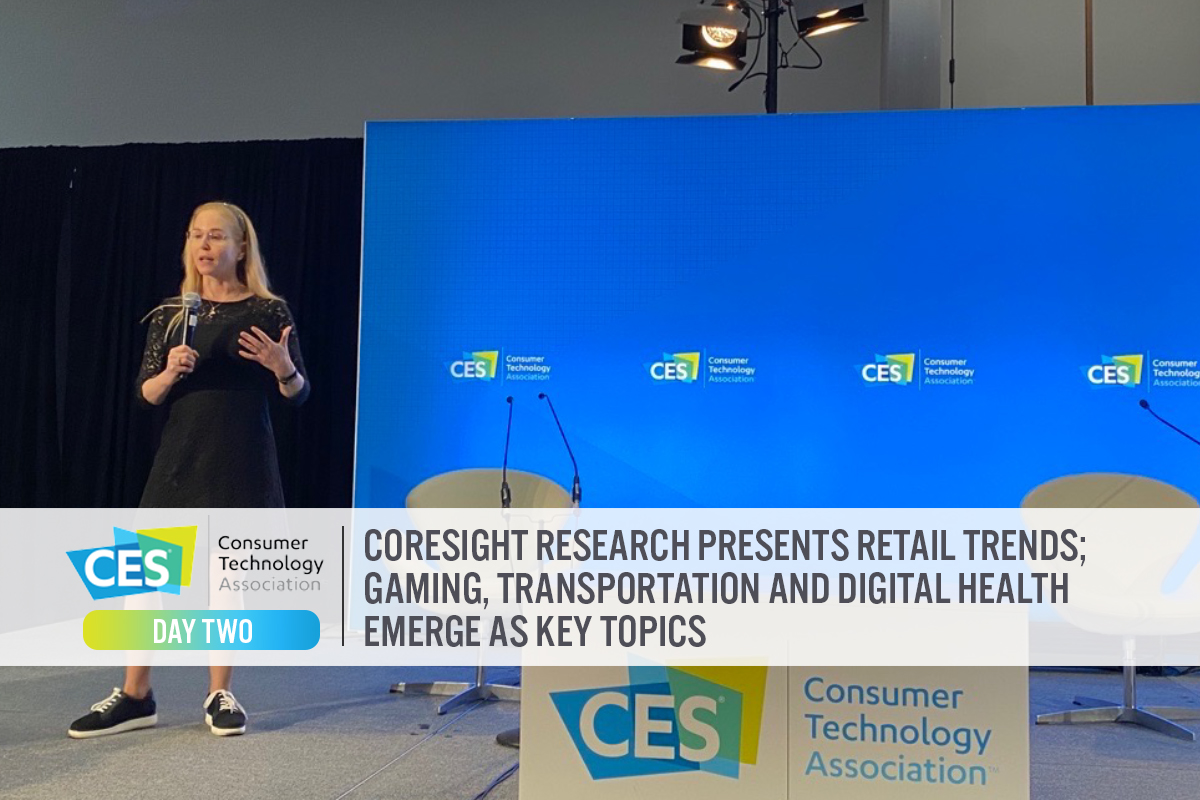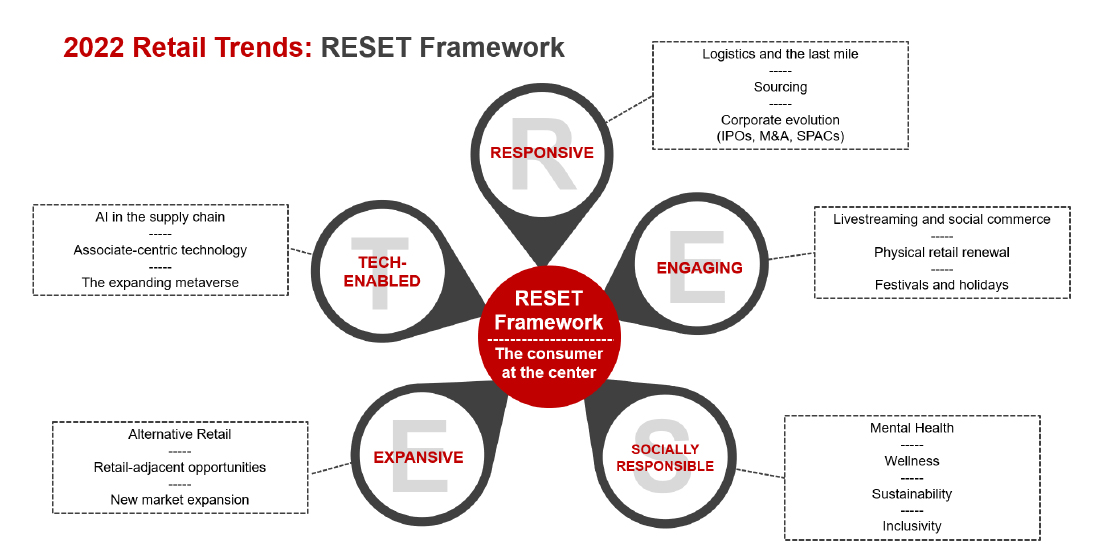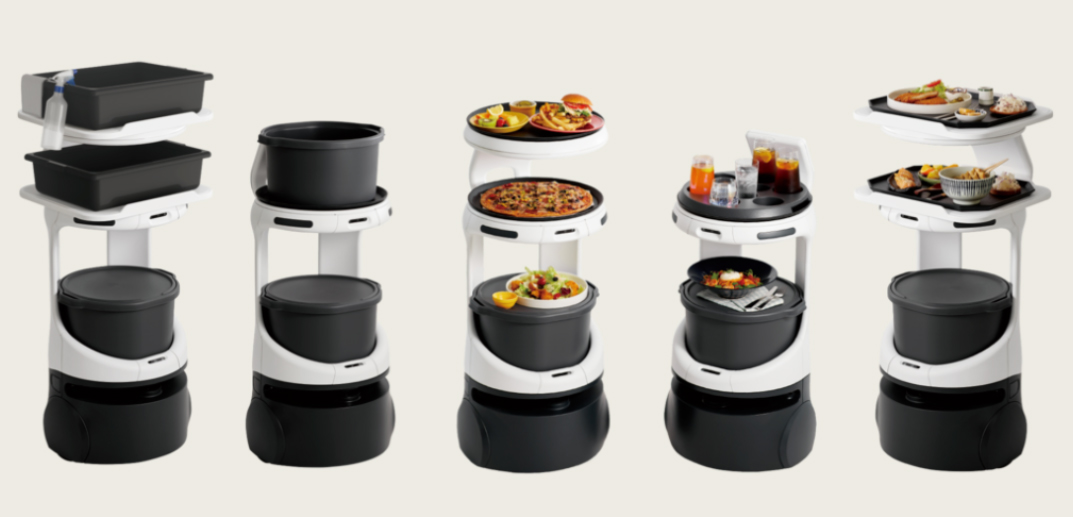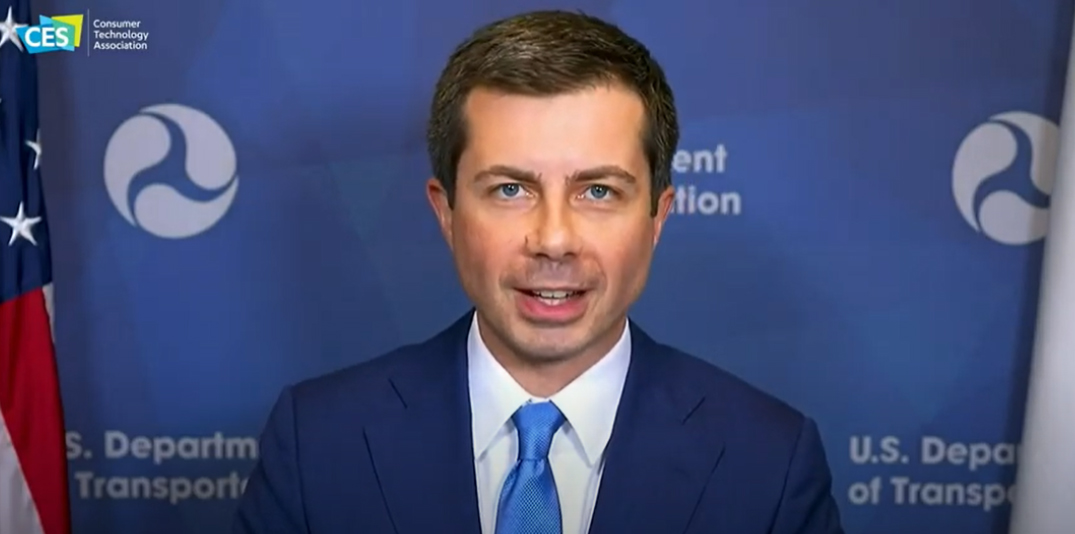
DIpil Das
The Coresight Research team is attending CES (formerly the Consumer Electronics Show), hosted by the Consumer Technology Association (CTA) in Las Vegas this week, with the exhibits running during January 5–7, 2022.
In this report, we present our top 10 insights from day two of the show on January 6.
 Weinswig presented Coresight Research’s RESET framework for change in retail
Weinswig presented Coresight Research’s RESET framework for change in retail
Source: Coresight Research [/caption] 2. Physical Retail Is Adopting New Purposes To Meet Shifting Consumer Preferences Led by Weinswig, a panel discussion shed light on the changing face of physical retail. Michael Jordan, Retail Research Manager at Shopcore Properties, noted that traditional grocers are competing with instant-needs firms such as GoPuff to purchase dark-store fleets and re-purpose them as micro-fulfillment centers for last-mile logistics. Moreover, retailers using their stores as fulfillment centers spans far beyond just the grocery and instant-needs sectors. For example, according to Jordan, 95% of Target’s demand is fulfilled through their physical stores rather than through warehouses. The panel further discussed how retailers are embracing the “showroom” persona of physical retail: Physical stores are one way for retailers to display their products for consumers to browse, only to have shoppers then return to their homes and make purchases online—emphasizing the need for omnichannel strategies. Retailers are putting consumers first, and responding to shifting needs and preferences is evident in the various emerging purposes of physical retail. [caption id="attachment_139039" align="aligncenter" width="700"] Source: CTA[/caption]
3. 5G Is Essential for Agriculture Automation and Rural Broadband
John Deere made a splash at CES with its automated farm equipment, which frees up farmers from driving their tractors to spend time on managing their agriculture business, analyzing data and planning for the future. One key element of this automation is the Operations Center, which receives data from the Deere equipment and analyzes it for the farmers’ benefit.
Mobile is the only appropriate technology for connecting these vehicles, yet not all rural areas have good wireless connectivity, which cripples the usefulness of this next-generation farm equipment. Fortunately, solutions are at hand that could improve connectivity in rural areas. The recently signed Infrastructure and Jobs Act includes $65 billion in funding to improve rural broadband access in the US and to make broadband more affordable.
4. NextGen TV Offers New Interactive Opportunities for Shopping, Entertainment and Personalized Content
The next-generation ATSC 3.0 standard—known as NextGen TV—created by the Advanced Television Systems Committee (ATSC), an international nonprofit organization, offers many improvements to digital television, a fusion of broadcast and Internet that promises better video (such as 4K) and audio, enhanced emergency messaging and subtitles, in addition to other features such as boosting the volume of speech over background sounds in TV shows.
NextGen TV builds upon the current digital TV standard (ATSC 1.0) and is an international standard, having already been implemented in South Korea in 2017. Its web-based technologies allow smart televisions and set-top boxes to run web apps, enabling personalization, interactivity and even shopping.
Major brands such as LG, Samsung and Sony are already shipping compatible TVs, and Hisense recently started offering compatible TVs at more affordable prices, broadening the reach of this new technology. About 45 major US cities already offer ATSC 3.0 content, and it will be available to about 75% of US households by summer 2022, according to CTA.
5. Software and Data Can Complement or Even Replace Medicines in Therapeutics
The panel discussion “Digital Therapeutics and the Road Ahead: Defining Health Outcomes Through Data and Tech” provided several examples of the use of software aids to help treat a wide range of conditions, including arthritis, depressive disorder, diabetes, general anxiety, multiple sclerosis, psoriasis, sleep disorders and substance abuse. In some cases, the use of software supplemented the use of medicines; in others, the software eliminated the need for them, which panelists described as a “1+1=3” situation. Software also has the ability to deliver medicines in precise amounts, at the right time, and is scalable.
6. Computer Gaming Can Provide Treatment for Mental Health and Other Health Issues
The CES 2022 session titled “Gaming Health” provided several examples of the use of virtual reality to help patients relax, monitor and assess the state of their health, answer surveys and even participate in telehealth sessions, which has served to improve patient engagement and also reduce pain and anxiety.
Source: CTA[/caption]
3. 5G Is Essential for Agriculture Automation and Rural Broadband
John Deere made a splash at CES with its automated farm equipment, which frees up farmers from driving their tractors to spend time on managing their agriculture business, analyzing data and planning for the future. One key element of this automation is the Operations Center, which receives data from the Deere equipment and analyzes it for the farmers’ benefit.
Mobile is the only appropriate technology for connecting these vehicles, yet not all rural areas have good wireless connectivity, which cripples the usefulness of this next-generation farm equipment. Fortunately, solutions are at hand that could improve connectivity in rural areas. The recently signed Infrastructure and Jobs Act includes $65 billion in funding to improve rural broadband access in the US and to make broadband more affordable.
4. NextGen TV Offers New Interactive Opportunities for Shopping, Entertainment and Personalized Content
The next-generation ATSC 3.0 standard—known as NextGen TV—created by the Advanced Television Systems Committee (ATSC), an international nonprofit organization, offers many improvements to digital television, a fusion of broadcast and Internet that promises better video (such as 4K) and audio, enhanced emergency messaging and subtitles, in addition to other features such as boosting the volume of speech over background sounds in TV shows.
NextGen TV builds upon the current digital TV standard (ATSC 1.0) and is an international standard, having already been implemented in South Korea in 2017. Its web-based technologies allow smart televisions and set-top boxes to run web apps, enabling personalization, interactivity and even shopping.
Major brands such as LG, Samsung and Sony are already shipping compatible TVs, and Hisense recently started offering compatible TVs at more affordable prices, broadening the reach of this new technology. About 45 major US cities already offer ATSC 3.0 content, and it will be available to about 75% of US households by summer 2022, according to CTA.
5. Software and Data Can Complement or Even Replace Medicines in Therapeutics
The panel discussion “Digital Therapeutics and the Road Ahead: Defining Health Outcomes Through Data and Tech” provided several examples of the use of software aids to help treat a wide range of conditions, including arthritis, depressive disorder, diabetes, general anxiety, multiple sclerosis, psoriasis, sleep disorders and substance abuse. In some cases, the use of software supplemented the use of medicines; in others, the software eliminated the need for them, which panelists described as a “1+1=3” situation. Software also has the ability to deliver medicines in precise amounts, at the right time, and is scalable.
6. Computer Gaming Can Provide Treatment for Mental Health and Other Health Issues
The CES 2022 session titled “Gaming Health” provided several examples of the use of virtual reality to help patients relax, monitor and assess the state of their health, answer surveys and even participate in telehealth sessions, which has served to improve patient engagement and also reduce pain and anxiety.
 Neurable’s smart headphones
Neurable’s smart headphones
Source: Neurable [/caption] 7. Beauty Brand Estée Lauder Will Further Invest in NFTs Estée Lauder, a multinational manufacturer of skincare, makeup, fragrance and haircare products, announced plans to further invest in NFTs (non-fungible tokens) in 2022. The brand first tested the sale of NFTs in-house by offering 100 NFTs to its employees in order to “see if we actually cared about NFTs,” according to Liz Bacelar, Executive Director of Global Tech Innovation at the company. The in-house trial sold out quickly across all age groups and genders. Bacelar noted that NFTs offer the chance to build a permanent connection with customers if retailers promise exclusive access to future sales or events tied to the purchase of an NFT. Estée Lauder is excited to further invest in NFTs. 8. Labor Shortages Drive the Automation of Food Service The automation of food service is being pursued to save labor, make labor management more efficient and reduce waste, said industry leaders who spoke at the “Welcome to Our Food Robot Future” session. During the pandemic, these three needs have become starker, further accelerating the trend. Andy Lin, CEO of Yo-Kai Express, explained that his autonomous ramen restaurant was the only eatery that could stay open 24/7 during the early days of the pandemic. Clayton Wood, Founder and CEO of pizza-maker robotics manufacturer Picnic, described how robots are helping restaurants go upmarket and, simultaneously, address the labor intensity of pizza making. The deployment of hospitality robots will not just eliminate jobs—it will also redefine old jobs and likely create new ones, too. Waiting staff will be able to focus better on their customers because robots will reduce their workload, said Juan Higueros, Co-Founder and COO of Bear Robotics, manufacturer of the Servi hospitality robot. [caption id="attachment_139041" align="aligncenter" width="700"] Bear Robotics’ Servi hospitality robots
Bear Robotics’ Servi hospitality robots
Source: Company website [/caption] 9. The Transportation Secretary Unveils Six Principles for Innovation During a virtual keynote at CES, Transportation Secretary Pete Buttigieg set out six principles in a move to clarify the federal role in the innovation of transportation: Transportation Secretary Pete Buttigieg sets out six principles for innovation in transportation
Transportation Secretary Pete Buttigieg sets out six principles for innovation in transportation
Source: CTA/YouTube [/caption] 10. Qualcomm Believes Technical Readiness Is Already in Place for the Transformation of Transportation Cristiano Amon, CEO of wireless technology Qualcomm, explained that the prevalence of 5G has been increasingly enabling all vehicles and traffic systems to connect to each other. He said that in the transformation of daily living, the role of 5G is so critical that it has become something of general-purpose industry like electricity. Amon also emphasized the regulatory role in harnessing and prompting innovation. He proposed that all vehicles be GPS-equipped, citing the Federal Communications Commission’s Wireless E911 Location Accuracy Requirements for cellphones and mobile devices that inadvertently facilitated the emergence of GPS-based platforms such as Uber and Lyft.
CES 2022 Day Two: Coresight Research Insights
1. Retailers Must RESET in 2022 To Adapt to a New World Marked by Consumer-Centricity Deborah Weinswig, CEO and Founder of Coresight Research (pictured at the top of this report), kicked off the second day of CES 2022 with a presentation on global retail trends for 2022. She discussed Coresight Research’s RESET framework for change, which groups our trends—and our recommendations to capitalize on those trends—around five areas of evolution and provides retailers with a model for adapting to a new world marked by consumer-centricity. The consumer sits at the center of the framework, with their preferences, behaviors and choices demanding change. [caption id="attachment_139038" align="aligncenter" width="701"] Weinswig presented Coresight Research’s RESET framework for change in retail
Weinswig presented Coresight Research’s RESET framework for change in retail Source: Coresight Research [/caption] 2. Physical Retail Is Adopting New Purposes To Meet Shifting Consumer Preferences Led by Weinswig, a panel discussion shed light on the changing face of physical retail. Michael Jordan, Retail Research Manager at Shopcore Properties, noted that traditional grocers are competing with instant-needs firms such as GoPuff to purchase dark-store fleets and re-purpose them as micro-fulfillment centers for last-mile logistics. Moreover, retailers using their stores as fulfillment centers spans far beyond just the grocery and instant-needs sectors. For example, according to Jordan, 95% of Target’s demand is fulfilled through their physical stores rather than through warehouses. The panel further discussed how retailers are embracing the “showroom” persona of physical retail: Physical stores are one way for retailers to display their products for consumers to browse, only to have shoppers then return to their homes and make purchases online—emphasizing the need for omnichannel strategies. Retailers are putting consumers first, and responding to shifting needs and preferences is evident in the various emerging purposes of physical retail. [caption id="attachment_139039" align="aligncenter" width="700"]
 Source: CTA[/caption]
3. 5G Is Essential for Agriculture Automation and Rural Broadband
John Deere made a splash at CES with its automated farm equipment, which frees up farmers from driving their tractors to spend time on managing their agriculture business, analyzing data and planning for the future. One key element of this automation is the Operations Center, which receives data from the Deere equipment and analyzes it for the farmers’ benefit.
Mobile is the only appropriate technology for connecting these vehicles, yet not all rural areas have good wireless connectivity, which cripples the usefulness of this next-generation farm equipment. Fortunately, solutions are at hand that could improve connectivity in rural areas. The recently signed Infrastructure and Jobs Act includes $65 billion in funding to improve rural broadband access in the US and to make broadband more affordable.
4. NextGen TV Offers New Interactive Opportunities for Shopping, Entertainment and Personalized Content
The next-generation ATSC 3.0 standard—known as NextGen TV—created by the Advanced Television Systems Committee (ATSC), an international nonprofit organization, offers many improvements to digital television, a fusion of broadcast and Internet that promises better video (such as 4K) and audio, enhanced emergency messaging and subtitles, in addition to other features such as boosting the volume of speech over background sounds in TV shows.
NextGen TV builds upon the current digital TV standard (ATSC 1.0) and is an international standard, having already been implemented in South Korea in 2017. Its web-based technologies allow smart televisions and set-top boxes to run web apps, enabling personalization, interactivity and even shopping.
Major brands such as LG, Samsung and Sony are already shipping compatible TVs, and Hisense recently started offering compatible TVs at more affordable prices, broadening the reach of this new technology. About 45 major US cities already offer ATSC 3.0 content, and it will be available to about 75% of US households by summer 2022, according to CTA.
5. Software and Data Can Complement or Even Replace Medicines in Therapeutics
The panel discussion “Digital Therapeutics and the Road Ahead: Defining Health Outcomes Through Data and Tech” provided several examples of the use of software aids to help treat a wide range of conditions, including arthritis, depressive disorder, diabetes, general anxiety, multiple sclerosis, psoriasis, sleep disorders and substance abuse. In some cases, the use of software supplemented the use of medicines; in others, the software eliminated the need for them, which panelists described as a “1+1=3” situation. Software also has the ability to deliver medicines in precise amounts, at the right time, and is scalable.
6. Computer Gaming Can Provide Treatment for Mental Health and Other Health Issues
The CES 2022 session titled “Gaming Health” provided several examples of the use of virtual reality to help patients relax, monitor and assess the state of their health, answer surveys and even participate in telehealth sessions, which has served to improve patient engagement and also reduce pain and anxiety.
Source: CTA[/caption]
3. 5G Is Essential for Agriculture Automation and Rural Broadband
John Deere made a splash at CES with its automated farm equipment, which frees up farmers from driving their tractors to spend time on managing their agriculture business, analyzing data and planning for the future. One key element of this automation is the Operations Center, which receives data from the Deere equipment and analyzes it for the farmers’ benefit.
Mobile is the only appropriate technology for connecting these vehicles, yet not all rural areas have good wireless connectivity, which cripples the usefulness of this next-generation farm equipment. Fortunately, solutions are at hand that could improve connectivity in rural areas. The recently signed Infrastructure and Jobs Act includes $65 billion in funding to improve rural broadband access in the US and to make broadband more affordable.
4. NextGen TV Offers New Interactive Opportunities for Shopping, Entertainment and Personalized Content
The next-generation ATSC 3.0 standard—known as NextGen TV—created by the Advanced Television Systems Committee (ATSC), an international nonprofit organization, offers many improvements to digital television, a fusion of broadcast and Internet that promises better video (such as 4K) and audio, enhanced emergency messaging and subtitles, in addition to other features such as boosting the volume of speech over background sounds in TV shows.
NextGen TV builds upon the current digital TV standard (ATSC 1.0) and is an international standard, having already been implemented in South Korea in 2017. Its web-based technologies allow smart televisions and set-top boxes to run web apps, enabling personalization, interactivity and even shopping.
Major brands such as LG, Samsung and Sony are already shipping compatible TVs, and Hisense recently started offering compatible TVs at more affordable prices, broadening the reach of this new technology. About 45 major US cities already offer ATSC 3.0 content, and it will be available to about 75% of US households by summer 2022, according to CTA.
5. Software and Data Can Complement or Even Replace Medicines in Therapeutics
The panel discussion “Digital Therapeutics and the Road Ahead: Defining Health Outcomes Through Data and Tech” provided several examples of the use of software aids to help treat a wide range of conditions, including arthritis, depressive disorder, diabetes, general anxiety, multiple sclerosis, psoriasis, sleep disorders and substance abuse. In some cases, the use of software supplemented the use of medicines; in others, the software eliminated the need for them, which panelists described as a “1+1=3” situation. Software also has the ability to deliver medicines in precise amounts, at the right time, and is scalable.
6. Computer Gaming Can Provide Treatment for Mental Health and Other Health Issues
The CES 2022 session titled “Gaming Health” provided several examples of the use of virtual reality to help patients relax, monitor and assess the state of their health, answer surveys and even participate in telehealth sessions, which has served to improve patient engagement and also reduce pain and anxiety.
- Petra Szatmari, Marketing Director of biotech firm Genentech, described an event with popular gamers that drove engagement of hemophiliacs—a priority, since 80% of those afflicted do not seek treatment—and created a community, enabling people to share their stories.
- Dr. Ramses Alcaide, CEO of tech company Neurable, explained how the company has developed a set of smart headphones that can monitor brainwaves and advise the wearer to take breaks in order to improve their mental focus.
 Neurable’s smart headphones
Neurable’s smart headphones Source: Neurable [/caption] 7. Beauty Brand Estée Lauder Will Further Invest in NFTs Estée Lauder, a multinational manufacturer of skincare, makeup, fragrance and haircare products, announced plans to further invest in NFTs (non-fungible tokens) in 2022. The brand first tested the sale of NFTs in-house by offering 100 NFTs to its employees in order to “see if we actually cared about NFTs,” according to Liz Bacelar, Executive Director of Global Tech Innovation at the company. The in-house trial sold out quickly across all age groups and genders. Bacelar noted that NFTs offer the chance to build a permanent connection with customers if retailers promise exclusive access to future sales or events tied to the purchase of an NFT. Estée Lauder is excited to further invest in NFTs. 8. Labor Shortages Drive the Automation of Food Service The automation of food service is being pursued to save labor, make labor management more efficient and reduce waste, said industry leaders who spoke at the “Welcome to Our Food Robot Future” session. During the pandemic, these three needs have become starker, further accelerating the trend. Andy Lin, CEO of Yo-Kai Express, explained that his autonomous ramen restaurant was the only eatery that could stay open 24/7 during the early days of the pandemic. Clayton Wood, Founder and CEO of pizza-maker robotics manufacturer Picnic, described how robots are helping restaurants go upmarket and, simultaneously, address the labor intensity of pizza making. The deployment of hospitality robots will not just eliminate jobs—it will also redefine old jobs and likely create new ones, too. Waiting staff will be able to focus better on their customers because robots will reduce their workload, said Juan Higueros, Co-Founder and COO of Bear Robotics, manufacturer of the Servi hospitality robot. [caption id="attachment_139041" align="aligncenter" width="700"]
 Bear Robotics’ Servi hospitality robots
Bear Robotics’ Servi hospitality robots Source: Company website [/caption] 9. The Transportation Secretary Unveils Six Principles for Innovation During a virtual keynote at CES, Transportation Secretary Pete Buttigieg set out six principles in a move to clarify the federal role in the innovation of transportation:
- To serve three key policy priorities—economic opportunity, equitable access to transportation and climate-change solutions
- To support workers
- To improve US competitiveness through reliable and adaptive transformation systems and infrastructure
- To be experimental to learn from setbacks
- Collaboration among the public, private and academic sectors
- Policy flexibility
 Transportation Secretary Pete Buttigieg sets out six principles for innovation in transportation
Transportation Secretary Pete Buttigieg sets out six principles for innovation in transportation Source: CTA/YouTube [/caption] 10. Qualcomm Believes Technical Readiness Is Already in Place for the Transformation of Transportation Cristiano Amon, CEO of wireless technology Qualcomm, explained that the prevalence of 5G has been increasingly enabling all vehicles and traffic systems to connect to each other. He said that in the transformation of daily living, the role of 5G is so critical that it has become something of general-purpose industry like electricity. Amon also emphasized the regulatory role in harnessing and prompting innovation. He proposed that all vehicles be GPS-equipped, citing the Federal Communications Commission’s Wireless E911 Location Accuracy Requirements for cellphones and mobile devices that inadvertently facilitated the emergence of GPS-based platforms such as Uber and Lyft.